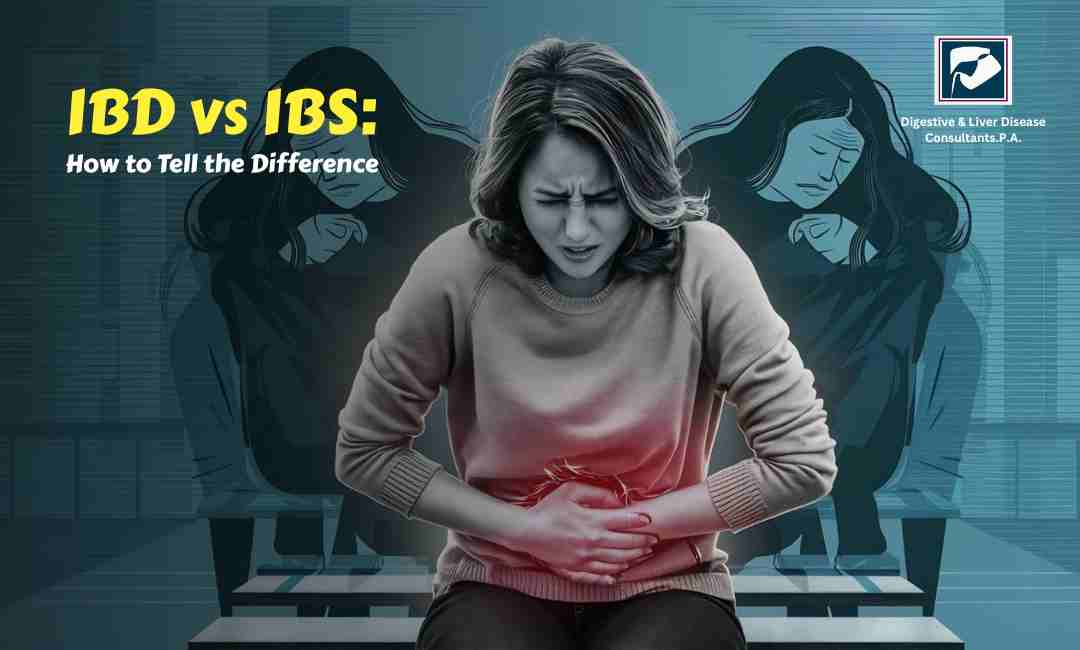Introduction
Ever felt a persistent, gnawing pain in your stomach or noticed a troubling discomfort after eating? These symptoms might point to a condition known as peptic ulcers. Peptic ulcers are more than just a nuisance—they’re painful sores that form on the lining of your stomach, small intestine, or esophagus, primarily due to the effects of stomach acid. While lifestyle changes and medications can often provide relief, pinpointing the exact cause of these ulcers and determining the best treatment requires a closer look inside your digestive tract. That’s where an upper endoscopy comes into play. Let’s explore how this essential diagnostic tool can help in accurately diagnosing and effectively treating peptic ulcers, and how the Digestive and Liver Disease Consultants (DLDC) can assist you in managing your condition with expert care.
What Are Peptic Ulcers?
Peptic ulcers are painful sores that form on the lining of your stomach (gastric ulcer), small intestine (duodenal ulcer), or esophagus (esophageal ulcer). They occur when the protective layer of mucus that shields these organs from stomach acid becomes compromised. Common causes of peptic ulcers include:
-
Helicobacter pylori (H. pylori) Infection: A bacterial infection that can erode the protective lining of the stomach and duodenum.
-
Nonsteroidal Anti-Inflammatory Drugs (NSAIDs): Medications like ibuprofen or aspirin can damage the stomach lining when used frequently or for extended periods.
-
Excessive Alcohol Consumption: Alcohol can irritate and erode the mucous lining of the digestive tract.
-
Smoking: Smoking can increase stomach acid production and delay ulcer healing.
-
Stress: While not a direct cause, stress can exacerbate ulcer symptoms and slow down the healing process.
Symptoms of Peptic Ulcers
Peptic ulcers can cause a range of symptoms, including:
-
Burning or Gnawing Pain: Often felt in the upper abdomen, especially when the stomach is empty.
-
Nausea or Vomiting: Including the presence of blood in vomit, which can indicate a more serious condition.
-
Indigestion: A feeling of fullness or bloating.
-
Weight Loss: Unexplained weight loss due to reduced appetite or difficulty eating.
-
Dark Stools: Indicating possible bleeding in the digestive tract.
If you’re experiencing these symptoms, it’s important to seek medical advice to get a proper diagnosis and treatment.
How Upper Endoscopy Helps Diagnose Peptic Ulcers
An upper endoscopy, also known as esophagogastroduodenoscopy (EGD), is a procedure that allows doctors to visually inspect the upper part of your digestive system. This includes the esophagus, stomach, and the beginning of the small intestine. Here’s how it helps in diagnosing peptic ulcers:
-
Visual Inspection
-
During an upper endoscopy, a thin, flexible tube with a camera at the end (endoscope) is inserted through your mouth and into your digestive tract. This allows your doctor to view the lining of your stomach, small intestine, and esophagus on a monitor. They can identify the presence of ulcers, assess their size, and determine their location.
-
Biopsy Collection
-
If your doctor sees any suspicious areas during the endoscopy, they might take small tissue samples (biopsies). These samples are examined under a microscope to check for signs of H. pylori infection or to rule out other conditions, such as cancer. Biopsies can help confirm the diagnosis and guide treatment.
-
Assessing Ulcer Severity
-
The endoscopy can help evaluate the extent of damage caused by the ulcer. This information is crucial for determining the most effective treatment plan and monitoring the healing process.
-
Identifying Complications
-
Complications such as bleeding, perforation (a hole in the stomach or intestinal wall), or blockage can also be identified during the procedure. Early detection of these complications allows for prompt treatment, reducing the risk of more serious health issues.
Preparing for an Upper Endoscopy
Preparing for an upper endoscopy is relatively straightforward:
-
Fasting: You’ll need to fast for several hours before the procedure to ensure your stomach is empty. Your doctor will provide specific instructions on how long you should avoid eating or drinking.
-
Medication Review: Inform your doctor about any medications you’re taking. Some medications, especially NSAIDs, may need to be stopped before the procedure.
-
Transportation: As you’ll be given a sedative to help you relax, arrange for someone to drive you home afterward.
What to Expect During and After the Procedure
-
During the Procedure:
-
You’ll receive a sedative to help you remain comfortable and relaxed. The endoscope will be gently inserted through your mouth, and the procedure usually takes 15 to 30 minutes.
-
You might feel some discomfort or a sensation of pressure, but it’s generally well-tolerated.
-
After the Procedure:
-
You may experience a sore throat or mild discomfort, which should resolve quickly. Your doctor will discuss the results with you, including any findings from biopsies if taken.
-
You’ll need to rest until the sedative wears off. Most people can resume normal activities the following day.
How DLDC Can Help
If you’re dealing with peptic ulcers and need expert diagnosis and treatment, the Digestive and Liver Disease Consultants (DLDC) team is here to provide comprehensive care. Our specialists are experienced in performing upper endoscopies and interpreting the results to create a tailored treatment plan for your specific needs. At DLDC, we focus on addressing the root causes of peptic ulcers and offering solutions to help you manage your condition effectively.
Conclusion
Peptic ulcers can be a painful and disruptive condition, but with the right diagnosis and treatment, you can find relief and improve your quality of life. An upper endoscopy is a valuable tool in diagnosing peptic ulcers, assessing their severity, and ruling out other potential issues. If you’re experiencing symptoms of peptic ulcers, don’t hesitate to consult with your doctor or contact the Digestive and Liver Disease Consultants (DLDC) to explore how we can help you get back on track to better health.
Understanding the role of upper endoscopy in diagnosing and treating peptic ulcers empowers you to take proactive steps toward managing your digestive health and achieving lasting relief from your symptoms.






